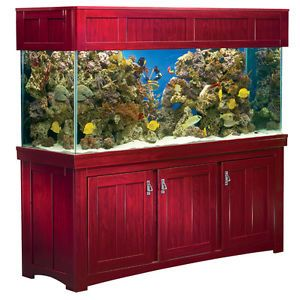Happy Boxing Day!
It actually can hurt, if the tank has plastic trim. At least if one has to ever file a claim with a LFS, or manufacturer. So that's one potential down side. I have seen this exact issue in the past, where a consumer did not follow the manufacturers set up instructions involving foam/no-foam, and after a failure in a new tank the warranty was void. If you have no warranty to fall back on, I guess do whatever you feel is best.
From a past discussion on this topic.
Good luck
It actually can hurt, if the tank has plastic trim. At least if one has to ever file a claim with a LFS, or manufacturer. So that's one potential down side. I have seen this exact issue in the past, where a consumer did not follow the manufacturers set up instructions involving foam/no-foam, and after a failure in a new tank the warranty was void. If you have no warranty to fall back on, I guess do whatever you feel is best.
From a past discussion on this topic.
If the tank has plastic trim, most manufacturers will void warranty if one uses foam. It does not act as a level if the tank has plastic trim. Just so that's clear, foam should only be used when the tank is custom made, with a flat rimless bottom.
Yep, most ithe USA will void the warranty if foam isused, certainly most of the large scale aquarium manufacturers. Some others, smaller scale builders, insist that it is used, or their warranty is void. Some state that you have to use their stands, or similar stands that would meet their specs. When in Rome ....
What the pics don't show is on the more common aquariums sold in the USA, Aqueon, Perfecto, All-Glass, etc, that bottom pane of glass is raised slightly from the black trim, and the tank then rests on the black trim, and when using one of their stands such as above, it only rests on each 4 corners. If one used styro on those style of tanks, when the plastic trim settled, it could potentially push the styro up enough to cause a crack in the glass, or a leak in a seam.
I have only ever shimmed the stand, never shimmed a tank, or ran a sheet of anything under a tank with plastic trim.
A couple of past threads that you might want to check out, Barrett.
Who puts polystyrene underneath their tank
Ive done this in the past, and wanted to know if it is absolutely essential or not. and what other things can you put instead, im guessing anything that will even out the pressure on the glass.www.monsterfishkeepers.com
Cinder block stand
Guys im looking for quick and cheap way to build a stand for a 75 gal or 40b tank. Can you guys give me some pointers on doing it with cinderblocks and possibly post some pics of you're stands. Some questions off the top of my head: Points of contact - where on the bottom of the tank should...www.monsterfishkeepers.com
Pics missing from first link above can be seen here:
Good luck







